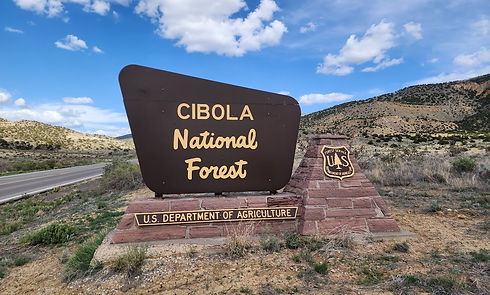Cibola National Forest

Planting in this forest.
In 2024, the Cibola National Forest continued its commitment to ecological restoration with the Bear Trap Fire Reforestation project. This initiative focuses on rehabilitating areas severely burned by the 2022 Bear Trap Fire in the Magdalena Ranger District. The project aims to replant appropriate native timber species, such as ponderosa pine and Douglas-fir, to restore forest cover, stabilize soils, and enhance ecosystem resilience. Over the next three years (2025-2027), the plan is to plant 200 acres or more annually, with approximately 300 trees per acre.
Building upon previous restoration efforts, the forest has addressed areas impacted by the 2016 Doghead Fire. In 2019, 50,000 ponderosa pine seedlings were planted across 250 acres in the Manzano Mountains to accelerate forest reestablishment and support watershed health. This effort was followed by the planting of an additional 40,000 trees in 2021, further contributing to the recovery of the affected ecosystem.
These restoration activities are part of a broader strategy to mitigate the impacts of wildfires and enhance the forest's resilience to future disturbances. By reintroducing native tree species and improving forest structure, the forest aims to create a more resilient ecosystem capable of withstanding environmental stressors. Additionally, these efforts contribute to the preservation of biodiversity, the protection of critical watersheds, and the long-term health of the forest ecosystem.




Location
New Mexico, USA
Project Type
Reforestation
Environmental Benefits
Wildlife Habitat Support
Enhanced Biodiversity
Soil Stabilization and Erosion Control
Watershed Health Improvement
Climate Resilience and Carbon Sequestrationl
About this forest
Cibola National Forest, located in central New Mexico, encompasses over 1.6 million acres of diverse landscapes, including rugged mountains, vast grasslands, and dense woodlands. Home to wildlife like black bears, elk, and golden eagles, the forest is vital for watershed health and biodiversity. It offers recreational opportunities such as hiking and camping, providing a serene escape into nature.




